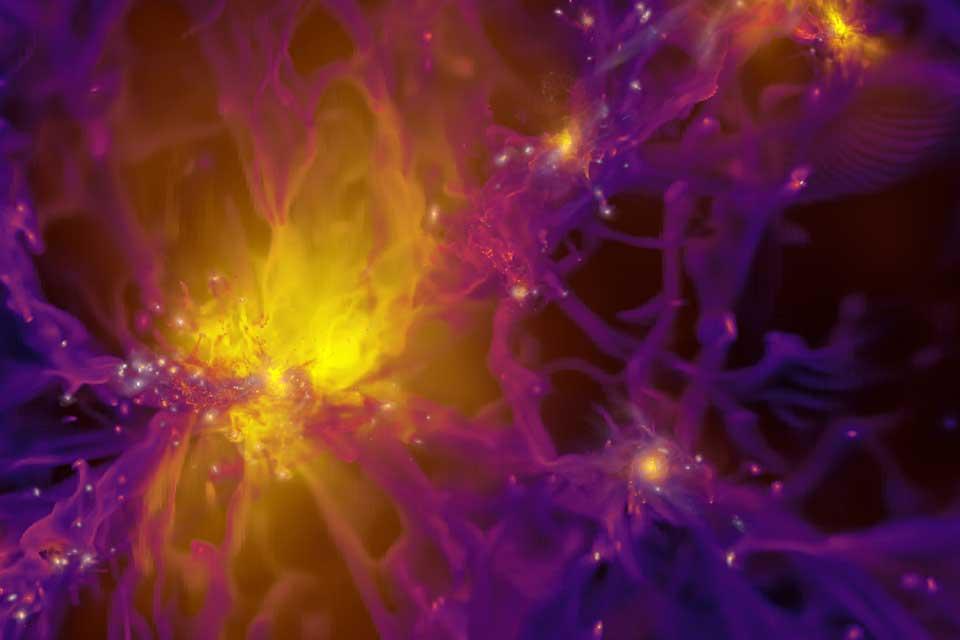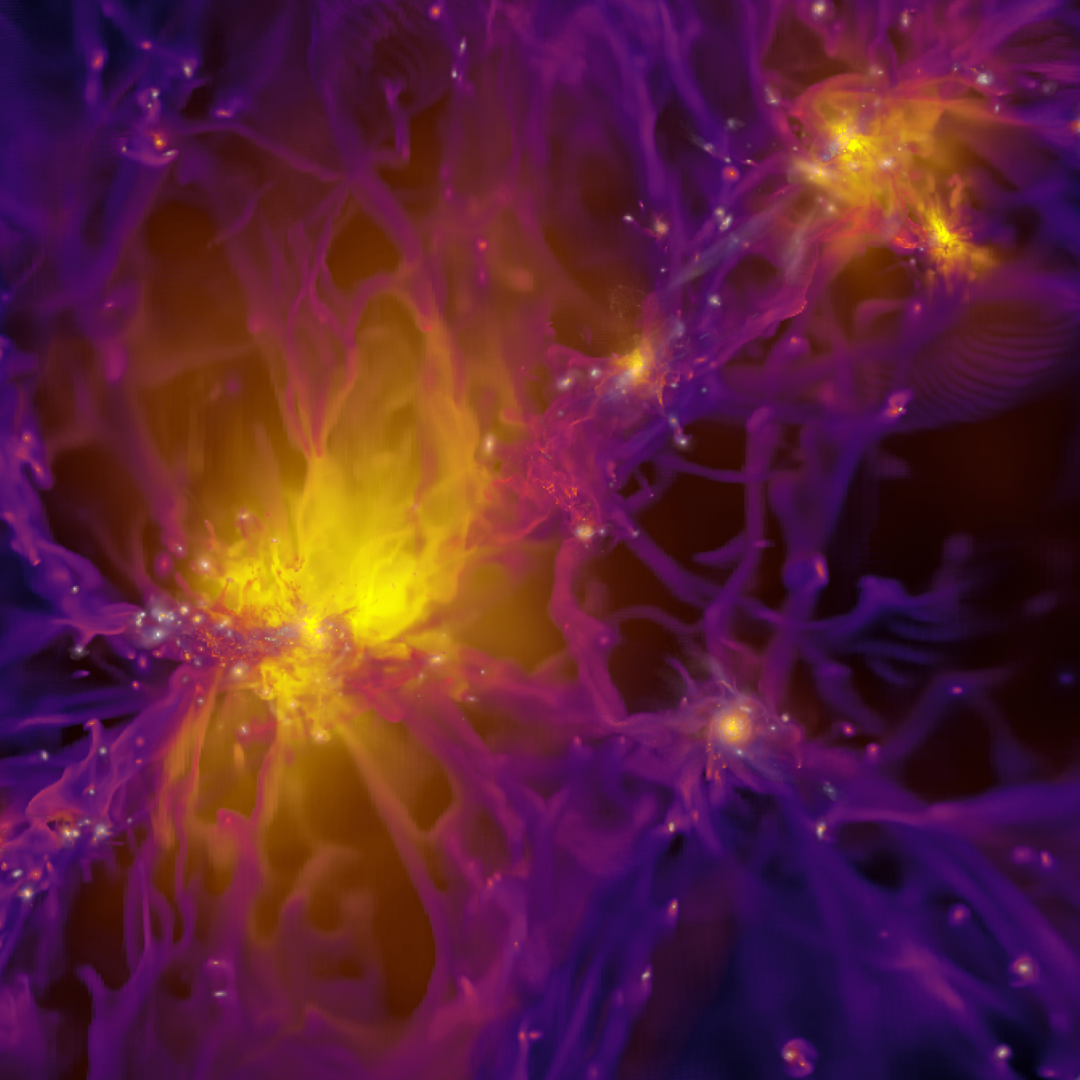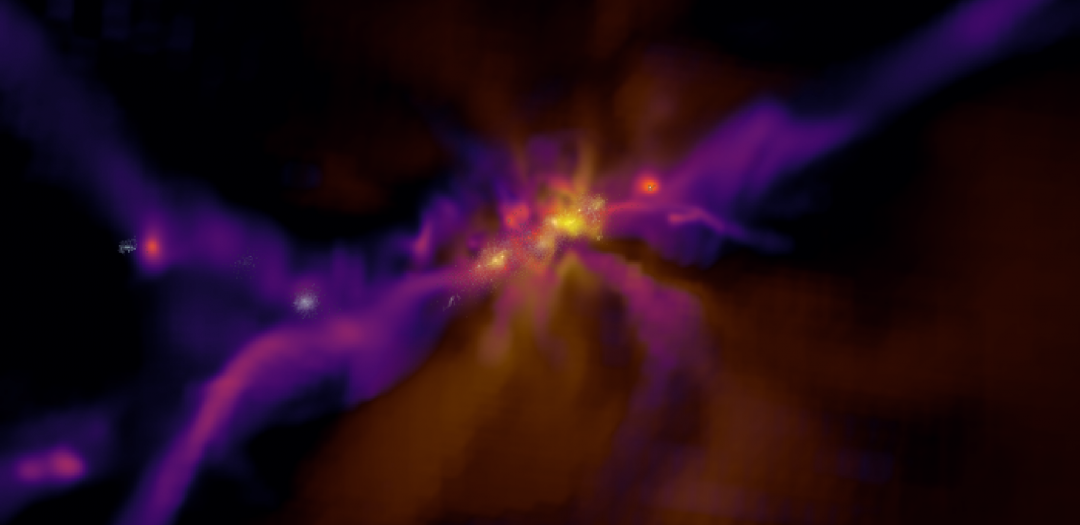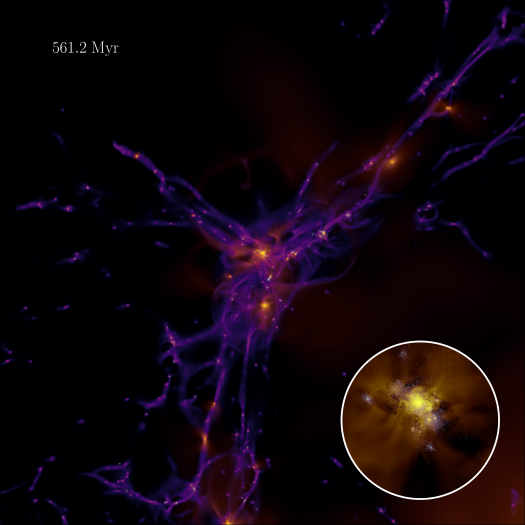
Recent findings have revealed convincing – and exciting – new evidence of when the very first generation of stars and galaxies stars began to shine. The findings were of particular interest to Dr Harley Katz, Beecroft Fellow in Cosmology at Oxford’s Department of Physics: he works with theoretical models, in particular, complex numerical simulations of galaxy formation in the early Universe, and, like many of his peers, he cannot wait for the next chapter: observational campaigns with the launch of the James Webb Space Telescope.
Some may say that just after the Big Bang, the Universe was a rather boring place. None of the diverse set of cosmological objects that light up our night sky, such as stars, galaxies, and black holes existed. In fact, the Universe was simply a hot, but cooling, mixture of hydrogen and helium, with only a trace amount of heavier elements.
Cosmic Dark Ages
The time after the Big Bang is known as the Dark Ages. Unlike our own early Medieval Dark ages, which lasted 500 years, the cosmic Dark Ages spanned a few hundred million years. However, as the primordial mixture of hydrogen and helium continued to cool, eventually, gravity took over, and birthed the first generation of stars. This event is known as “First Light” or “Cosmic Dawn”, and signaled a new epoch, the Epoch of Reionization.
While the birth of the first generation of stars in our Universe is still too faint to observe, even with our most powerful space telescopes, it is often considered one of the last major frontiers in modern observational astrophysics. Pinpointing the timing of these events is crucial for understanding how the Universe evolved in its infancy. However, because of our current observational limitations two different, indirect approaches have been used to probe cosmic dawn.
Pinpointing the cosmic dawn
When stars evolve, they express certain observational signatures that can be used to measure the age of their stellar populations. For example, one of the primary indicators is the Balmer break, which appears as a jump in the spectra of a star at ~3564 angstroms. As stars age their density and temperature change, which impacts the size of the Balmer break. Hence if one can observe a Balmer break, one can measure the age of the stellar populations. In a recent study, Nicholas Laporte at the University of Cambridge, along with collaborators based in London, California, and Texas, observed six of the most distant, or highest redshift, galaxies known in the Universe with the purpose of measuring their star formation histories, thus constraining the timing of cosmic dawn.
While these recent observations have provided deep insight into the first generation of stars and galaxies, much remains uncertain as these objects only appear as a few pixels on even our highest resolution images. However, when the observations are combined with theoretical models, in particular complex numerical simulations of galaxy formation in the early Universe, a wealth of new information can be unlocked about the characteristics and star formation histories of these ancient galaxies.
Pioneering computer models
The timing of these recent observations has coincided with the completion of the SPHINX suite of simulations, one of the largest and most detailed computer models ever run of galaxy formation in the early Universe. The SPHINX team has spanned 3 continents, including members here in Oxford. The flagship SPHINX20 simulation is so large that it would take nearly 7,000 years to run on a standard laptop. These simulations resolve the detailed properties of the first galaxies, allowing us to further interpret what Laporte and collaborators have seen as well as provide us a way to visualise what we think cosmic dawn may have looked like, paving the way for future observational campaigns. While the Hubble Space Telescope is not quite powerful enough to observe this event, the impending launch of the James Webb Space Telescope may soon open up this new frontier allowing us to further constrain the history and evolution of our Universe.




